|
Rip Currents: Where's the Rip?
Signs that a rip current is present are very subtle and difficult for the average beachgoer to identify. Look for differences in the water color, water motion, incoming wave shape or breaking point compared to adjacent conditions. Look for these clues as one, all or none may be visible:
- Channel of churning, choppy water
- Line of foam, seaweed, or debris moving steadily seaward
- Area having a notable difference in water color
- Break in the incoming wave pattern
Channel of churning, choppy water
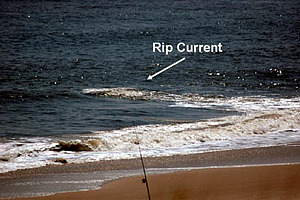
Photo courtesy of Dr. Wendy Carey, Delaware Sea Grant
|
Line of foam, seaweed, or debris moving seaward
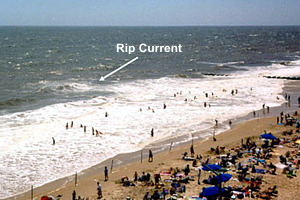
Photo courtesy of Dr. Wendy Carey, Delaware Sea Grant
|
Area having a notable difference in water color
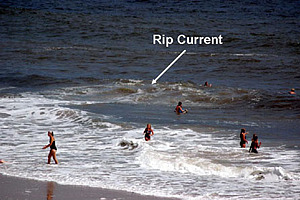
Photo courtesy of Dr. Wendy Carey, Delaware Sea Grant
|
Area having a notable difference in water color
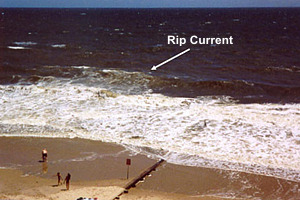
Photo courtesy of Dr. Wendy Carey, Delaware Sea Grant
|
Break in the incoming wave pattern
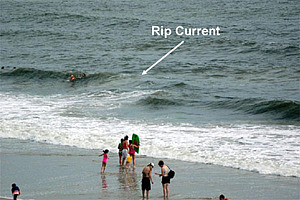
Photo courtesy of Dr. Wendy Carey, Delaware Sea Grant |
Break in the incoming wave pattern
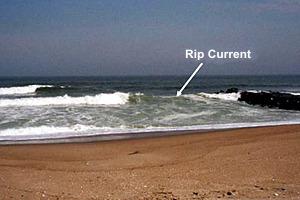
Photo courtesy of Dr. Tom Herrington, Stevens Institute of Technology |
|
|





